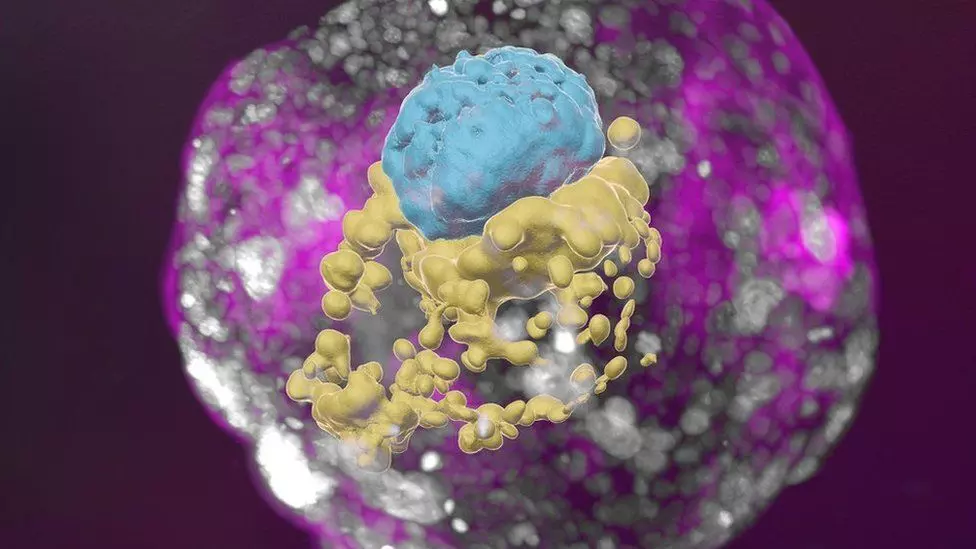Scientists grow whole model of human embryo without sperm or egg
The stem cell based embryo-like structures (termed SEMs) developed normally outside the womb for 8 days, reaching a developmental stage equivalent to day 14 in human embryonic development.
By Newsmeter Network
New Delhi: Scientists have grown human embryo like structures without using sperm, eggs or a womb, an advance that could help reveal the causes of many birth defects and types of infertility.
A research team at the Weizmann Institute of Science in Israel created the complete models of human embryos from stem cells cultured in the lab and managed to grow them outside the womb up to day 14.
The research, published in the journal Nature, shows that these synthetic embryo models had all the structures and compartments characteristic of this stage, including the placenta, yolk sac, chorionic sac and other external tissues that ensure the models' dynamic and adequate growth.
The stem cell derived human embryo model "closely mimics the development of a real human embryo, particularly the emergence of its exquisitely fine architecture," said Jacob Hanna, a professor at the Weizmann Institute of Science.
The scientists did not use fertilised eggs or a womb. Rather, they started out with human cells known as pluripotent stem cells, which have the potential to differentiate into many cell types.
Some were derived from adult skin cells that had been reverted to "stemness." Others were the progeny of human stem cell lines that had been cultured for years in the lab, they said.
The researchers then reprogrammed pluripotent stem cells to revert these cells to an even earlier state known as the naive state in which they are capable of specialising into any type of cell.
This stage corresponds to day 7 of the natural human embryo, around the time it implants itself in the womb.
The scientists divided the cells into three groups. The cells intended to develop into the embryo were left as is. The cells in each of the other groups were treated only with chemicals, without any need for genetic modification, so as to turn on certain genes.
These genes cause these cells to differentiate towards one of three tissue types needed to sustain the embryo: placenta, yolk sac or the extraembryonic mesoderm membrane that ultimately creates the chorionic sac.
Soon after being mixed together under optimised, specifically developed conditions, the cells formed clumps, about 1 per cent of which self-organised into complete embryo-like structures.
The researchers said the stem cell based embryo-like structures (termed SEMs) developed normally outside the womb for 8 days, reaching a developmental stage equivalent to day 14 in human embryonic development.
That is the point at which natural embryos acquire the internal structures that enable them to proceed to the next stage: developing the progenitors of body organs, they said.
The models faithfully emulated the process by which an early embryo gains all the structures it needs for beginning its transformation into a fetus.
"Many failures of pregnancy occur in the first few weeks, often before the woman even knows she's pregnant. That is also when many birth defects originate, even though they tend to be discovered much later," Hanna said.
"Our models can be used to reveal the biochemical and mechanical signals that ensure proper development at this early stage, and the ways in which that development can go wrong," she added.
The researchers also found that if the embryo is not enveloped by placenta-forming cells in the right manner at day 3 of the protocol -- corresponding to day 10 in natural embryonic development -- its internal structures, such as the yolk sac, fail to properly develop.
This approach to unlocking the mysteries of the very first stages of embryonic development could open numerous research paths. It might help reveal the causes of many birth defects and types of infertility, the researchers said.
It could also lead to new technologies for growing transplant tissues and organs. And it could offer a way around experiments that cannot be performed on live embryos for example, determining the effects of exposure to drugs or other substances on fetal development, they added.
Inputs from PTI